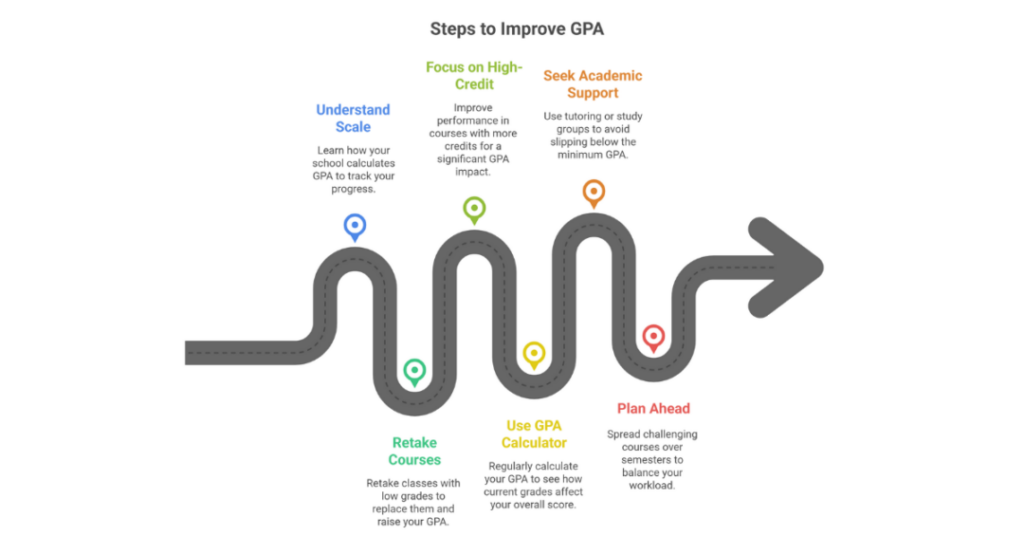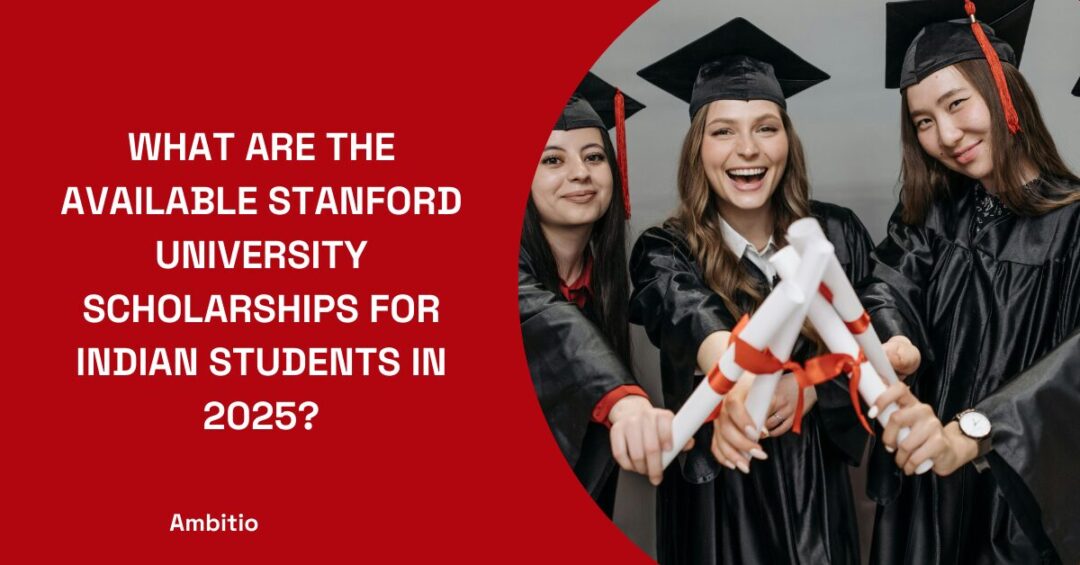22 July 2025
6 minutes read
GPA USA: Everything Indian Students Need to Know About Grading System and Conversion

Key Takeaways
- GPA USA matters for admissions, with most universities requiring at least a 3.0 on the 4.0 scale for entry and financial aid.
- Understand weighted, unweighted, and cumulative GPA to meet program-specific requirements and track your progress accurately.
- Use GPA calculators and retake key courses to boost your average and stay competitive for top US universities.
Did you know most US universities expect a minimum 3.0 GPA (on a 4.0 scale) for admissions and financial aid? Yet, many Indian students struggle with the grading system in the USA because grades, percentages, and letter grades don’t directly match.
Converting Indian marks to the GPA USA scale used by high schools and universities can be confusing. Understanding how GPA is calculated using grade points, credits, and the 4-point scale is crucial to avoid costly mistakes while applying.
What is GPA in the USA?
GPA USA stands for Grade Point Average, a numerical measure of academic achievement used in the grading system in the USA for high schools and universities. It is calculated on a 4.0 GPA scale, where letter grades (A, B, C, D, F) and percentages are converted into GPA using a grade point scale.
Your overall GPA is the total grade points divided by the total number of credits, covering semester GPA, cumulative GPA, and class GPA. The college grading system includes weighted GPA, unweighted GPA, and conversion scales for international students, helping meet minimum GPA requirements for financial aid and admissions.
Types of GPA in the USA
In the GPA USA system, students often encounter different types of GPA that schools and universities use to track academic grades. Each type of grading system follows a grade scale and 4-point GPA system, helping measure a student’s GPA based on final grades, overall grades, and academic achievement.

Understanding these variations is key to meeting minimum GPA standards for a passing grade, avoiding a failing grade, and improving chances for admissions or financial aid in the education system used in the US.
Weighted vs. Unweighted GPA Explained
A weighted GPA scale includes the difficulty of classes, such as AP or honors, giving students a higher GPA even if their final grade is lower.
It may exceed the scale of 0 to 4 and reach 5.0. An unweighted GPA uses the 4-point GPA system where grades are converted into GPA based only on grade points and percentages.
High schools use both depending on the GPA grading system used, so always check your high school transcript and calculate your average using a GPA calculator.
Cumulative GPA vs. Major GPA
Cumulative GPA is your overall GPA, covering every course and number of grade points divided by the total credits during your time at university or high school.
Major GPA focuses only on courses from your chosen field, often required to meet a minimum 2.0 GPA or GPA of 3.0 for graduation or financial aid.
Both are part of the school grading system called the four-point grading system, where academic grades are converted to the 4.0 scale using the conversion scale of Indian GPA for international students when needed.
How to Calculate GPA in the USA?
Calculating your GPA USA can seem confusing because high schools and universities use different grading systems and scales.
Whether it’s a high school GPA or US GPA for college, understanding how grades or percentages are converted to the 4.0 scale is essential for maintaining a high GPA and meeting requirements.
Steps to Calculate Your GPA in the USA:
- Know what GPA stands for – It represents your average GPA, calculated using a numerical system on a scale between 0 and 4, where the highest grade (A) equals 4.0 and the lowest passing grade is usually D (1.0).
- Identify the grading system used – Some schools follow a weighted scale (honors/AP get extra points), while others use a different system with standard weights.
- Assign grade points – Each grade is assigned a point value (e.g., A=4, B=3). Grades can also be converted to grades using the official conversion scale of Indian GPA for international students.
- Multiply by credits – Multiply each grade point by the course credits, then add them.
- Divide by total credits – Your overall GPA is the sum of all grade points divided by the total credits, a system used by high schools and universities.
- Convert your grades if needed – When applying abroad, convert your GPA using the conversion scale provided by the institution or a GPA calculator.
- Raise your GPA – Retake classes, improve final grades, or focus on maintaining a high GPA with better performance.
Example:
If you earned an A (4.0) in a 3-credit class and a B (3.0) in a 4-credit class:
- (4.0 × 3) + (3.0 × 4) = 12 + 12 = 24.
- Total credits = 7.
- GPA = 24 ÷ 7 = 3.43 (a good GPA on the 4.0 scale).
What is a Good GPA in the USA?
In the GPA USA system, a “good GPA” depends on where you’re studying and what your goals are. Most high schools use the 4.0 scale, where the top grade (A) equals 4.0, and you must convert your grade according to the system used while filling college applications.
Understanding what counts as “good” is key, especially when grades are converted to the 4.0 scale for admissions.
Average GPA for High School and College Students
The average GPA in high school across the USA is typically around 3.0 on the scale used, while competitive students often maintain a higher GPA of 3.5 or above. In college, the system is used similarly, where anything above 3.0 is considered strong, though specific programs may demand more. Always check how schools convert your grades to the 4.0 scale for comparisons.
GPA Requirements for Top US Universities
For Ivy League and elite schools, the expectation is much higher, with many students maintaining a GPA in high school of 3.8–4.0 on the scale used. These institutions expect you to convert your grade according to the system while filling applications, ensuring grades are translated to the 4.0 scale accurately. A “good GPA” here is usually 3.7+ alongside strong test scores and extracurriculars.
| GPA Range (4.0 Scale) | Competitiveness Level | Typical Institutions & Notes |
|---|---|---|
| 3.8 – 4.0 (Top Grade) | Extremely Competitive | Ivy League schools, Stanford, MIT – Students must convert their grades to the 4.0 scale using the system used while filling out applications. |
| 3.5 – 3.7 (High GPA) | Very Competitive | Top 50 US universities – Strong academics; GPA in high school often boosted by AP/honors courses on a weighted scale. |
| 3.0 – 3.4 (Average GPA) | Moderately Competitive | State universities, public colleges – Many accept students with grades converted to the 4.0 scale, often alongside solid test scores. |
| 2.5 – 2.9 (Passing GPA) | Less Competitive (Meets Minimum GPA) | Community colleges and some state schools – Must convert your grade according properly to meet the system used for eligibility. |
| Below 2.5 (Lowest Passing Grade) | Not Competitive (Limited Options) | Remedial or open-enrollment institutions – Most schools require a minimum 2.0 GPA to avoid academic probation. |
How to Improve Your GPA in the USA?
Raising your GPA USA isn’t just about getting better grades, it’s about understanding how the 4.0 scale works and using strategies to improve your academic standing.

By learning how schools are using a scale to calculate GPA, you can take specific actions to boost your average and avoid academic risks.
- Understand the Scale Used – Know how your school is using a scale (0 to 4) to calculate GPA so you can track where you stand.
- Retake Courses – If allowed, retake classes with low grades to replace them and raise your GPA USA.
- Focus on High-Credit Classes – Improving performance in courses with more credits impacts your GPA more significantly.
- Use a GPA Calculator – Regularly calculate your GPA to see how current grades affect your overall score.
- Seek Academic Support – Use tutoring or study groups to avoid slipping below the minimum GPA required by your program.
- Plan Ahead – Spread challenging courses over semesters to balance your workload while maintaining a high GPA.
Conclusion
Understanding GPA USA is the first step toward making your dream of studying in the US a reality. From learning how the 4.0 scale works to converting your grades accurately, your GPA plays a huge role in admissions, scholarships, and financial aid. But grades alone don’t define your success; your profile does. That’s where Ambitio comes in.
At Ambitio, we don’t just guide you; we build your entire study-abroad profile, crafting strong SOPs, LORs, resumes, and applications so you stand out. Ready to make your GPA work for you? Let’s build your dream university path together with Ambitio!
FAQs
What is a GPA and why is it important in the U.S. education system?
GPA, or Grade Point Average, is a numerical representation of a student’s academic performance, crucial for admissions and assessing eligibility in U.S. universities.
How does the U.S. GPA system differ from the Indian grading system?
The U.S. uses a 4.0 scale where grades are assigned numerical values, while Indian systems often use percentages or letter grades without a standard conversion scale.
How can I convert my Indian GPA to the U.S. 4.0 scale?
To convert, you need to understand the U.S. grading system’s scale and often use a conversion tool or guideline provided by the U.S. institution you’re applying to.
What are grade points, and how do they affect my GPA?
Grade points are numerical values assigned to letter grades (e.g., A = 4.0). They are multiplied by course credits and averaged to calculate your GPA.
What is the significance of the lowest passing grade in the U.S. system?
The lowest passing grade, often a D or 1.0 on the 4.0 scale, determines the minimum standard for course completion and credit earning in U.S. universities.
Do U.S. universities have specific conversion scales for international students?
Yes, many U.S. universities provide specific conversion scales or guidelines for international students to translate their grades into the U.S. GPA system.
Can understanding GPA conversions help in scholarship applications?
Absolutely, a clear understanding of GPA conversions can highlight your academic strengths, making you a more competitive candidate for scholarships and other opportunities.

You can study at top universities worldwide!
Get expert tips and tricks to get into top universities with a free expert session.
Book Your Free 30-Minute Session Now! Book a call now




























